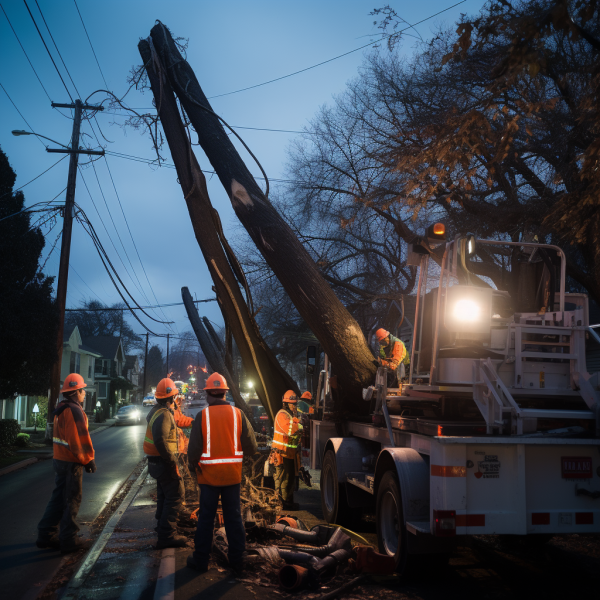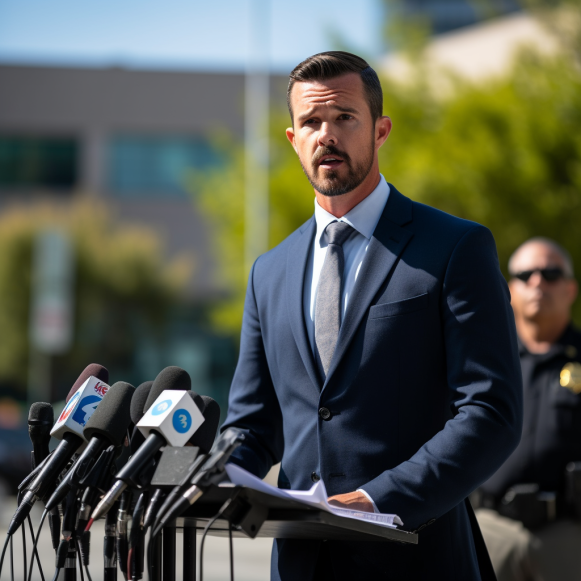Newsom throws support behind California home insurance overhaul with order that could speed rate hikes

Consumer advocates blasted the move but industry representatives say it’s essential to averting collapse of the state’s insurance market
Gov. Gavin Newsom and Insurance Commissioner Ricardo Lara announced Thursday plans to overhaul regulation of California’s collapsing home insurance market over the next year, handing insurers some long-desired changes to incorporate the rising costs of climate change into homeowners’ policies while seeking commitments that they stop bailing out the wildfire-ravaged state.
The likely outcome for consumers is that home insurance will become more accessible but also more expensive.
“The changes I’m announcing today are aimed at modernizing the insurance market and protecting consumers,” Lara said at a hurriedly called afternoon news conference, describing what he called the state’s most significant insurance regulation reform since voters toughened rate regulation in 1988.
Lara’s announcement came shortly after Newsom issued an executive order urging the independently elected commissioner to expedite rate increases and, for the first time, allow insurers to factor in the increasing risks of extreme weather and wildfires caused by climate change in homeowners’ rates.
“It is critical that California’s insurance market works to protect homes and businesses in every corner of our state,” said Newsom in a statement announcing the order. “A balanced approach that will help maintain fair prices and protections for Californians is essential.”
Consumer advocates have long opposed such changes, but insurance companies argue that they are critical to increasing access to coverage.
“It is painfully clear that the current system is not working properly,” said Rex Frazier, president of the Personal Insurance Federation of California, the industry’s trade group. “Today’s actions are an important first step toward stabilizing the insurance market in California.” We look forward to the next steps in reforming the system in order to increase insurance availability and signal the realities of what it will take to adapt to climate change and strengthen California communities.”
However, consumer advocates claim that the order merely requests approval of the industry’s “wish list” and will result in massive increases in insurance rates with no guarantee that companies will continue to provide coverage. Many of the state’s largest carriers have already requested rate increases of 30% to 40% from the state.
The “obviously orchestrated sequence of events” in Newsom’s and Lara’s announcements, according to Harvey Rosenfield, founder of Consumer Watchdog and author of the state’s 1988 Proposition 103 voter insurance revolt, will only “undermine the protections against insurance price-gouging” in state regulations.
Sharp increases in insurance policy prices have rocked homeowners in many parts of the state, particularly in and around wildland areas, and many have had their coverage canceled and forced onto the FAIR Plan, a private, temporary coverage-of-last-resort system that the state called for decades ago when urban riots caused insurers to withdraw coverage.
Newsom’s order outlined alarming statistics illustrating the state’s insurance market meltdown. State Farm and Allstate, two of the state’s largest insurance carriers, representing over 27% of the state’s insurance market, have announced that they will no longer issue new homeowners and commercial property insurance policies in California. Farmers, along with several others representing an additional 36% of the market, announced plans to limit new policies.
Non-renewals increased by 158% in the ten counties with the highest wildfire risk during that time period, and the number of FAIR Plan policies in 2021 was more than ten times the total in 2018, threatening the program’s long-term viability.
The state’s insurance commissioner has the authority to change the rules, and Newsom’s executive order was largely intended to show support and speed up the process.
According to Newsom’s order, Lara should improve “the efficiency, speed, and transparency of the department’s rate approval process,” which should “account for all factors necessary to promote a robust, competitive insurance marketplace, including potential revisions to the way catastrophe risks and insurer costs are accounted for.”
California is one of several states that have seen insurance rates skyrocket in the aftermath of catastrophic disasters that lawmakers, regulators, and insurers blame on a warming climate caused by industry. Insurers have withdrawn from hurricane-ravaged states such as Florida, and rates have risen.
According to the Insurance Information Institute, a New York-based industry information association, current California regulations prevent insurers from factoring rising risks into policy premiums. These rules require insurers to base their rates on historical losses rather than computer climate models. They also prevent insurers from passing on to customers the rising costs of reinsurance, or insurance for insurers, which they purchase to help absorb large losses. According to insurers, the bureaucratic approval process is too slow and limits the size of rate increases, causing them to fall behind rising risk.
Computer-risk models, according to Rosenfield, generate “black box” projections based on proprietary formulas that may have little basis in reality. And he claims that reinsurance, which is sold by global financial institutions, is completely unregulated.
Lara stated on Thursday that his office will work to implement changes by December 2024, which will include consumer protection concessions. While insurers can base increases on predictive models, they must be verifiable, according to him. They can include “California-only reinsurance costs” in rate increase filings to avoid paying for flood and hurricane risks in other states.
To reduce the state’s reliance on the FAIR Plan as a last resort, Lara said he wants insurers to commit to writing “no less than 85% of their statewide market share in high wildfire risk communities.” That means that if a company writes policies for 20 out of 100 homes statewide, it must also write policies for 17 out of 100 homes in a distressed area, according to him.
Consumer advocates were not satisfied, claiming that states that allow insurers to use predictive models and bill for reinsurance, such as Florida, have much higher rates and fewer coverage options.
“With these changes,” Consumer Watchdog President Jamie Court warned, “California is in danger of becoming Florida.”





